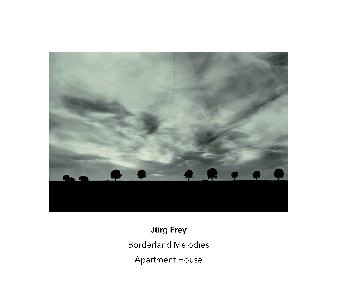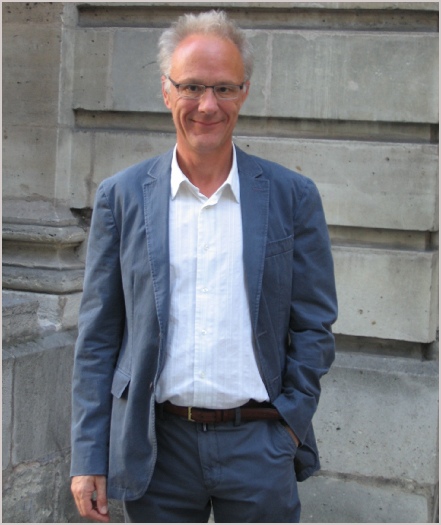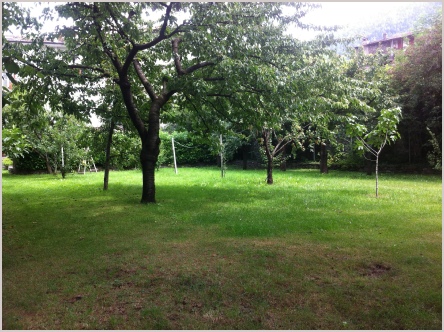Another Timbre TimHarrisonbre
Interview with Jürg Frey
This CD was planned a long time ago, but then delayed by the Covid pandemic. What was the thinking behind the album, and how did that change?
The original idea had been for a CD of pieces that use both clarinet and bass clarinet, which would have given me the opportunity to play alongside Heather Roche, Apartment House’s regular clarinetist. However, the pandemic intervened and limited my activities as a player. Then I was seriously ill for a few weeks at the beginning of the year, and had to think fundamentally about my future activities as a player. As a result, I decided to stop playing the clarinet, so the original idea behind the album was changed.
But in terms of the pieces on the CD, there was a positive side to the delays. The repeated postponements gave me the opportunity to play through the new piece I’d composed for the recording session, “L’état de simplicité”, again and again for myself. Through this extra time, I discovered ways to make things clearer, to go forward step by step, and to bring the pieces to a point I hadn’t expected before.
As you've been playing, and teaching, clarinet for decades, does it feel strange to stop playing the instrument?
No, it’s not strange. Having spent more than 50 years of my life with the clarinet, it is now a unique experience to have some time ahead of me in which the clarinet no longer plays a role. There are no regrets. I have played so much, classical and new repertoire, the clarinet has opened many, many doors for me to people and musicians, to hearts of friends, and to different kinds of music. It is a wonderful past. And now this completely unexpected and new experience that arises when you no longer do something and leave something behind that shaped your life before. I am glad that I can have this experience.
Do you also think about retiring from composition?
No, stopping composing was never an option. As a clarinet player, I can always be replaced, as this recording now proves most beautifully. But as a composer, only I can write my own pieces. I don't think you can replace me. J
And as long as I feel I have something to say and as long as I find or invent reasons to write new pieces, I will continue.
And I still love to work with musicians and ensembles, to be part in the process of rehearsals and preparing concerts with my music. This will go on, and I’m very happy about that.
Tell us about the pieces on the new CD. Firstly ‘Borderland Melodies’: the title references landscape, which is something that seems to underlie a lot of your music. Why and how do you work with a sense of landscape?
I’d like to say something about this reference to landscape because, yes, it is an important factor underlying my music. But to avoid any misunderstanding: it is never about programmatic music. It is never about the illustration of any landscape. The relation to landscape is a conceptual underground. Both composition and landscape have these elements in common: time/duration, form/shape and material.
The concept of "landscape" opens up very different perceptions. It can be a wild landscape, an empty landscape, a landscape developed over a thousand years. Or just a taste of landscape, in the evening light. Or a landscape slightly or strongly shaped by people. Or an industrial landscape. A view over hundreds of miles, or a small field in the backyard. And the surface of a landscape is a wide range of sensibilities: stones, rocks, woods, grass, sand - colorful or monochrome. And then there are all the artificially designed landscapes: gardens, places of contemplation, and an image of the human imagination. Japanese gardens are an articulation of philosophy and history. The austere and symmetric form of French Baroque gardens make them beautiful to walk in, but is also the image of a monarchical social structure. English gardens that suggest natural growth, but behind which lies a subtle design plan. And not to forget, many, many private gardens, maybe on a balcony, or simply small place next to a road junction, to create a little world, or to let it be and leave the garden to itself.
I can relate many of these thoughts to my music. But you mustn't think of it as a working principle. It is not the basis of my work. The basis is always in the musical thinking and the compositional craft. But occasionally the idea of a garden or landscape flashes up, and sometimes helps me to find a way out of a stuck corner in the compositional process. I find the idea of landscape and garden inspiring. And both landscape and composition have in common that they are about time, with things or sounds in it. When a piece is finished, I can find traces of these common ideas again, and that sometimes can influence the title of the piece.
Secondly the new piece, ‘L’état de simplicité’. What does the title – and the movement titles – refer to? Generally you write single movement pieces, but this has four distinct – and distinctly different – movements. Is there a reason for this?
The title sounds a bit like the title of a treatise, or a collection of essays. That’s very different from a long single movement piece. It’s a challenge to work with long durations, with different energies, movements and standstills, balances of material, and to form everything into a great whole. These work processes are not easy to survey because they relate to long durations in the piece. It’s complex; it’s about construction and intuition, you have to focus on details, but at the same time you need to be all over the piece.
Recently I wrote two pieces, each of which is an hour long and has individual movements. The 4th String Quartet has five movements, and Les signes passagers for pianoforte has seven movements. There is also a sequence here, but it is divided into single movements, like one chapter after another, and you can sometimes wait a while. But taken as a whole, there is a clear sequence and a formal direction. But with L’état de simplicité things are different. There are four individual movements, each dealing with a separate theme, resulting in the distinct differences you mention.
‘A treatise at the edge of the sense’ is the title of the first piece. Why that?
À la limite du sens is a little essay in sound about musical meaning. In the background is the personal experience that structural logic does not necessarily make musical sense. It is difficult to say whether there is such a thing as "logic" in music at all, but "illogical" things can sound most fascinating in music. There is a fine line between whether something sounds like it makes sense or not. And simply making sense is nothing either. When I compose, I often operate on the edge of sense. Or in other words, I work in an area that seems meaningless to me, and gradually and I make sense of it little by little. In the end, when we hear the piece, we accept what we hear. And yet we can hear how the music balances on a fine line that keeps the edge of the sense, the question of "why?", perceptible and present.
The second movement is called toucher l'air....
Yes, the title describes the situation when a player plays a note and makes the air vibrate. He touches the air. It takes very little to touch the air. So it is also a general description of the musical situation. And the French word air has another meaning: melody. There is a slight appearance of the idea of melody in the piece.
And what are the ‘neutral zones’?
In the last piece I refer to a term I have occasionally come across in the novels of Patrick Modiano: Les zones neutres. In his books, such spaces appear. A street, not empty, not busy, maybe a neighbourhood shop or a disused car repair shop, a few trees, an almost empty pavement... everything is balanced so that it falls into a state that is nothing special. But when we are in such a neutral zone, we notice something unique to that zone that is not easily forgotten.
And it’s the same with this piece: cello pizzicato, somewhere between scales and melodies, not chaotic and also not very pronounced. The other instruments sometimes play chords, nothing special, just chords. But again it is this paradox: once you have heard the piece, you don't easily forget it and you will recognise it on another encounter. This is the characteristic of a neutral piece.
Finally ‘Movement, Ground, Fragility’, which I understand is a re-working of a slightly older piece for new instrumentation. In what context was the piece first written, and how has it changed?
I wrote the piece in 2014 for a concert in Minneapolis. It was a weekend Wandelweiser festival organized by Jesse Goin. For our recording, I adapted the instrumentation to the musicians of Apartment House. The electric guitar was transformed into a cello part, and the melodica/harmonica part is now viola.
Does the title “Movement, Ground, Fragility” again refer to an idea of landscape?
At the very most a glimmer of it. The piece begins with a strict structure of viola and percussion, something like a ground, to form an architecture. Individual tones and dyads appear, of varying size and colors, unsystematically. The two forces, a clear structure, and sounds that simply happen, unfold their effectiveness. And then follows a short section in the low register. After the recording, Anton Lukoszevieze said about this part of the piece: “I never have played such a slow Blues before”. The second half of the piece is more left to itself. The surface of the music can’t be precisely controlled by the players; melodic fragments and different tempos appear. Sometimes the sounds are notated in the form of lists, and sounds from this list come to the surface by chance. At the core there is a potential of music that unfolds, but on the surface everything is left to itself to some extent. And yes, it is true that sometimes something like that can happen in a garden.

at200 Jürg Frey ‘Borderland Melodies’
Three chamber pieces, involving clarinet and bass clarinet, and performed by Apartment House
1 Borderland Melodies (2019) 18:21
Kerry Yong, piano Mira Benjamin, violin Anton Lukoszevieze, cello
Heather Roche, clarinet Raymond Brien, bass clarinet
2 L’état de simplicité (2021) 21:30
Mira Benjamin, violin Bridget Carey, viola Anton Lukoszevieze, cello
Heather Roche, clarinet Raymond Brien, bass clarinet
3 Movement, Ground, Fragility (2014/2020) 31:43
Kerry Yong, piano Mira Benjamin, violin Bridget Carey, viola Anton Lukoszevieze, cello
Heather Roche, clarinet Raymond Brien, bass clarinet Simon Limbrick, percussion

Jürg Frey





Everyday landscape photographs by Jürg Frey